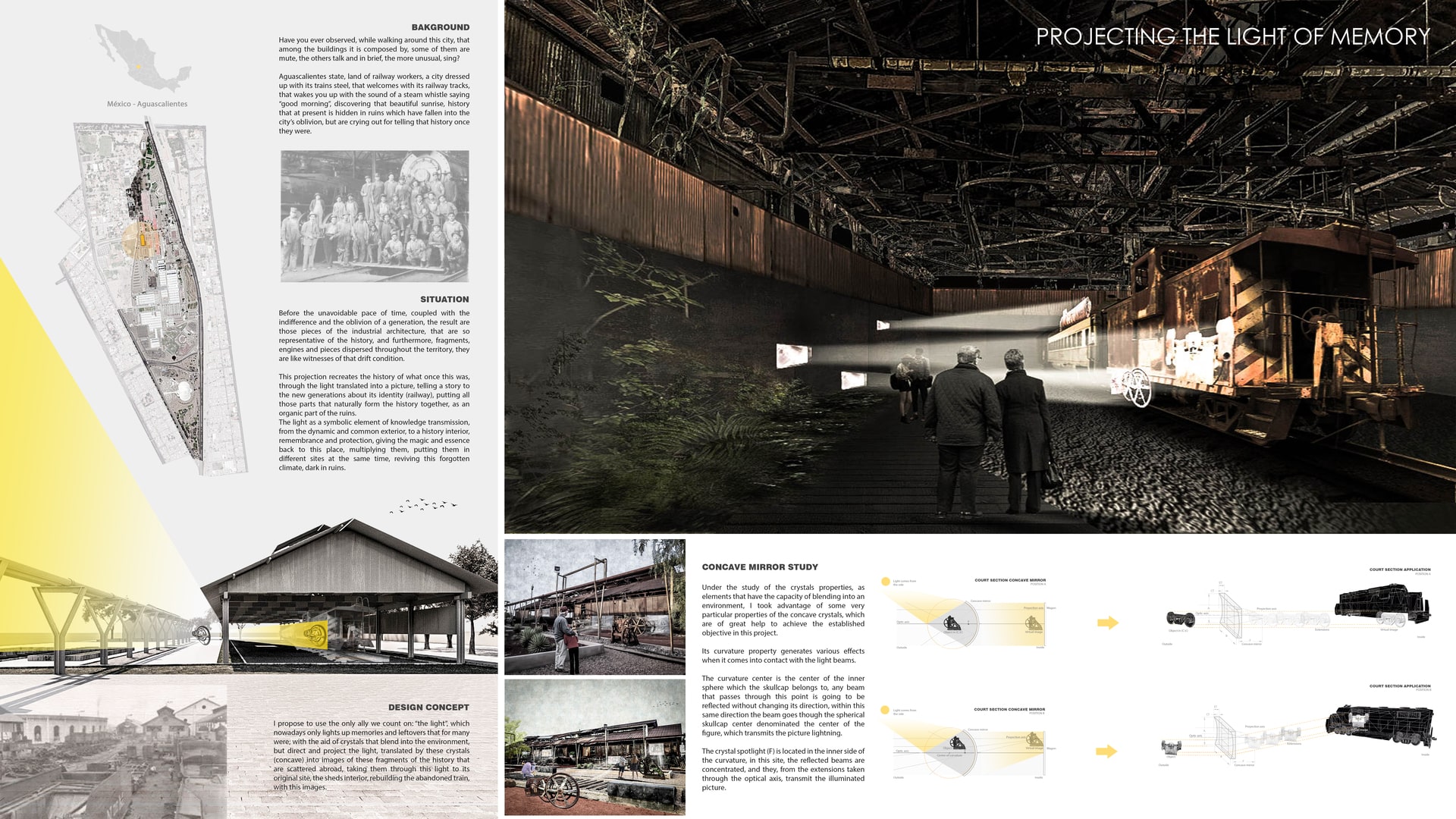Project Description
Have you ever observed, while walking around this city, that among the buildings it is composed by, some of them are mute, the others talk and in brief, the more unusual, sing? Aguascalientes state, land of railway workers, a city dressed up with its trains steel, that welcomes with its railway tracks, that wakes you up with the sound of a steam whistle saying “good morning”, discovering that beautiful sunrise, history that at present is hidden in ruins which have fallen into the city’s oblivion, but are crying out for telling that history once they were. Before the unavoidable pace of time, coupled with the indifference and the oblivion of a generation, the result are those pieces of the industrial architecture, that are so representative of the history, and furthermore, fragments, engines and pieces dispersed throughout the territory, they are like witnesses of that drift condition. I propose to use the only ally we count on: “the light”, which nowadays only lights up memories and leftovers that for many were; with the aid of crystals that blend into the environment, but direct and project the light, translated by these crystals (concave) into images of these fragments of the history that are scattered abroad, taking them through this light to its original site, the sheds interior, rebuilding the abandoned train, with the images, rebuilding the abandoned train with this images. This projection recreates the history of what once this was, through the light translated into a picture, telling a story to the new generations about its identity (railway), putting all those parts that naturally form the history together, as an organic part of the ruins. The light as a symbolic element of knowledge transmission, from the dynamic and common exterior, to a history interior, remembrance and protection, giving the magic and essence back to this place, multiplying them, putting them in different sites at the same time, reviving this forgotten climate, dark in ruins. Under the study of the crystals properties, as elements that have the capacity of blending into an environment, I took advantage of some very particular properties of the concave crystals, which are of great help to achieve the established objective in this project. Its curvature property generates various effects when it comes into contact with the light beams. The curvature center is the center of the inner sphere which the skullcap belongs to, any beam that passes through this point is going to be reflected without changing its direction, within this same direction the beam goes though the spherical skullcap center denominated the center of the figure, which transmits the picture lightning. The crystal spotlight is located in the inner side of the curvature, in this site, the reflected beams are concentrated, and they, from the extensions taken through the optical axis, transmit the illuminated picture. In the case that the illuminated object is in a shorter distance from the focal length, a virtual and right picture is formed with respect to the effect. The importance of positioning the crystal within the same axis of the focal length guarantees the image transmission in a 1:1 scale, managing to position the missing historical pieces in their site, achieving a real virtual scene in the set. While we achieved to recreate, through real pictures projections, the history and the city’s internal identity, it is very important to keep the current condition of the pieces, since this forms part of the City´s Architecture and given the situation it went through and it currently faces, it writes down its history on its past moments. Lately, have you ever observed, while walking around this city, that among the buildings it is composed by, some of them are dumb, the others talk and in brief, the more unusual, sing? Paul Valéry in his “Eupalinos” used to make Sócrates to say.
